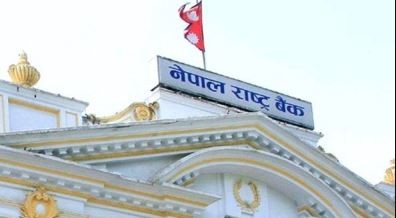Foreign trade shows encouraging signs

By A Staff Reporter
Kathmandu, Oct. 24: The foreign trade situation of the country has shown encouraging signs in the first two months of the current fiscal year 2019/20 with a significant increase in merchandise export and decline in import.
In two months, merchandise exports increased by 25.9 per cent to Rs.18.5 billion compared to an increase of 8 per cent a year ago, showed the Current Macroeconomic and Financial Situation report published by the Nepal Rastra Bank on Wednesday.
Similarly, merchandise imports decreased by 1.2 per cent to Rs.229.50 billion against an increase of 38.5 per cent in the same period of the previous year.
Destination-wise, exports to India increased by 46 per cent whereas exports to China decreased by 17.4 per cent. Mainly exports of palm oil, cardamom, jute goods, yarn (polyester and other) and textiles, among others, increased whereas exports of zinc sheet, juice, wire, readymade garment, and pashmina, among others, decreased in the first two months.
Likewise, imports from China increased by 39.2 per cent whereas imports from India, and other countries decreased by 2 per cent and 19.8 per cent respectively.
Import of readymade garments, crude palm oil, other machinery and parts, hot rolled sheet, chemical fertiliser, among others, increased whereas imports of aircraft spare parts, M.S. billet, gold, petroleum product and cement, among others, decreased.
Total trade deficit narrowed by 3.1 per cent to Rs. 211 billion in the first two months this fiscal year. However, the export-import ratio increased to 8.1 per cent from 6.3 per cent last year. Balance of Payments (BOP) remained at a surplus of Rs.8.83 billion in the review period compared to a deficit of Rs.25.45 billion the previous year.
Remittance inflow decreased
Remittance inflows decreased 0.3 per cent to Rs.153.7 billion in the first two months of the current fiscal while it was increased by 33.4 per cent the previous year. The country is experiencing the decline in remittance inflow for the first time in the last four years.
In the US Dollar term, such inflows decreased by 1.3 per cent this year compared to 22.3 per cent increase in the corresponding period of the previous year.
Likewise, number of Nepalese workers migrated for foreign employment increased by 0.2 per cent in the review period. It had decreased by 39.0 per cent last year.
In the first two months of the FY 2019/20, capital transfer and foreign direct investment (FDI) in Nepal amounted to Rs.2.96 billion and Rs.1.98 billion respectively.
In the same period of previous year, capital transfer and FDI amounted to Rs.2.80 billion and Rs.1.23 billion respectively.
Net services income remained at a deficit of Rs.5.06 billion in the review period compared to a deficit of Rs.11.02 billion a year ago. Likewise, under the service account, travel income increased by 24.4 per cent to Rs.11.39 billion in the review period. Such income was Rs.9.16 billion in the same period of the previous year.
Similarly, under the service account, travel payments decreased by 21.9 per cent to Rs.14.85 billion, including Rs.7.71 billion for education. Such travel payment was Rs.19.01 billion in the same period the previous year.
Inflation rate almost doubled
The NRB said that inflation rate has almost doubled in September compared to the last year.
The year-on-year consumer price inflation stood at 6.16 per cent in mid-September 2019 compared to 3.86 per cent a year ago. Food and beverage inflation stood at 6.51 per cent whereas non-food and service inflation stood at 5.89 per cent in the review month.
The Kathmandu Valley witnessed 7.9 per cent inflation followed by 5.69 per cent in the Terai, 5.09 per cent in the hill and 5.02 per cent in the mountain. These regions had witnessed 2.98 per cent, 3.68 per cent, 5.0 per cent and 3.35 per cent inflation respectively a year ago.
Recent News

Do not make expressions casting dout on election: EC
14 Apr, 2022
CM Bhatta says may New Year 2079 BS inspire positive thinking
14 Apr, 2022
Three new cases, 44 recoveries in 24 hours
14 Apr, 2022
689 climbers of 84 teams so far acquire permits for climbing various peaks this spring season
14 Apr, 2022
How the rising cost of living crisis is impacting Nepal
14 Apr, 2022
US military confirms an interstellar meteor collided with Earth
14 Apr, 2022
Valneva Covid vaccine approved for use in UK
14 Apr, 2022
Chair Prachanda highlights need of unity among Maoist, Communist forces
14 Apr, 2022
Ranbir Kapoor and Alia Bhatt: Bollywood toasts star couple on wedding
14 Apr, 2022
President Bhandari confers decorations (Photo Feature)
14 Apr, 2022











